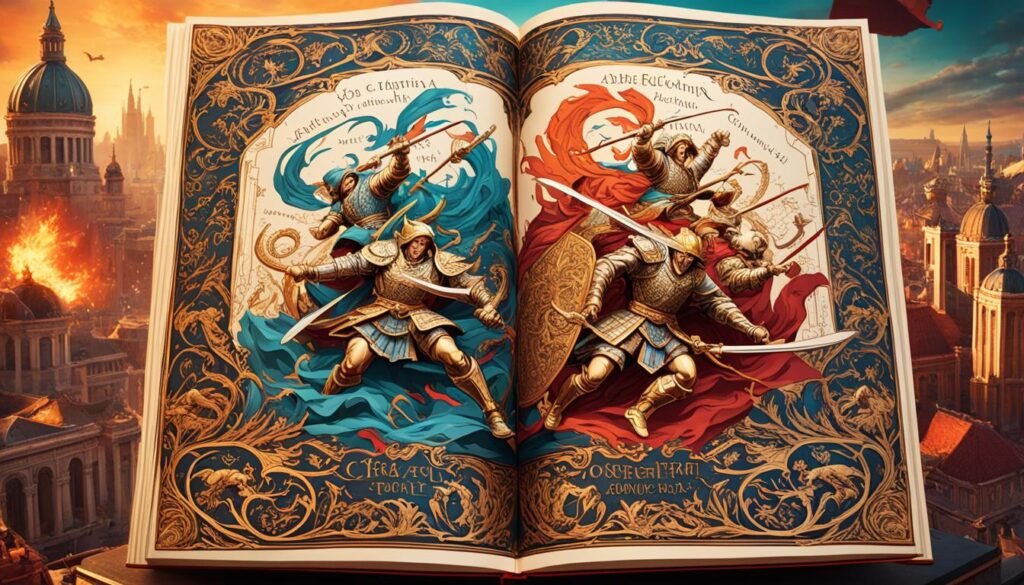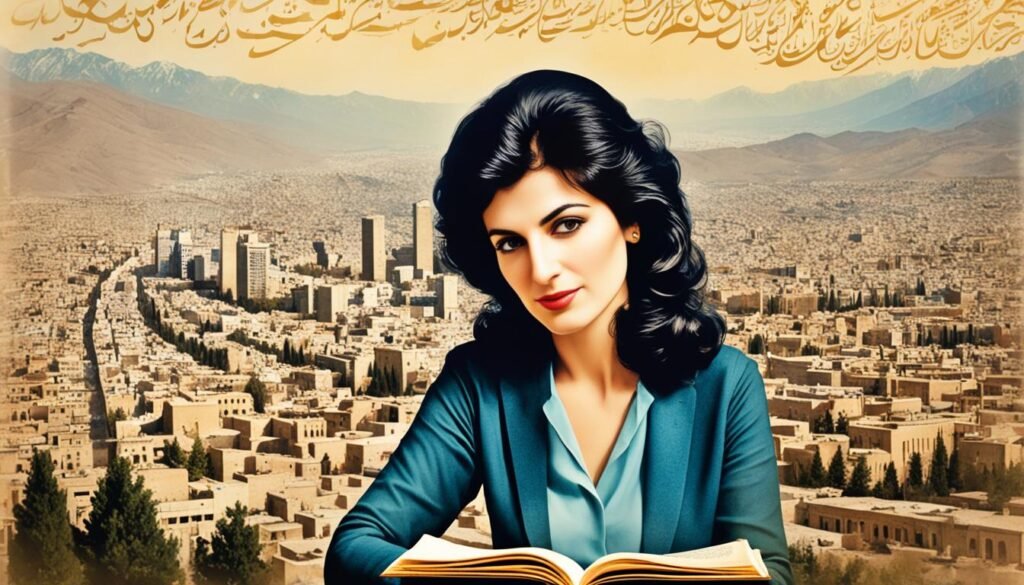The legacy of Persian literature spans over two and a half millennia, making it one of the oldest and most prestigious literary traditions in the world. From the timeless epics of Ferdowsi to the lyrical beauty of Hafiz, Iranian authors have captivated global audiences with their enduring works. At the heart of this vibrant literary scene lies Tehran, the capital of Iran, which has long been a hub for the country’s most celebrated poets, novelists, and thinkers.
Tehran’s literary landscape is a tapestry of classical Persian poetry, mystical Sufi verse, and contemporary works that grapple with the social and political realities of modern Iran. The city is home to renowned literary centers, prestigious book fairs, and a thriving community of Iranian writers who continue to push the boundaries of their craft. Whether exploring the timeless themes of love, spirituality, or social justice, Persian literature in Tehran offers a window into the rich cultural heritage and diverse perspectives of the Iranian people.
Key Takeaways
- Persian literature is one of the oldest and most prestigious literary traditions in the world, spanning over 2,500 years.
- Tehran, the capital of Iran, is a hub for the country’s literary scene, hosting renowned authors, literary centers, and prestigious events.
- Persian literature encompasses a wide range of genres, including classical poetry, mystical Sufi verse, and contemporary works that explore social and political themes.
- Iranian authors like Ferdowsi, Saadi, Hafiz, and Rumi have had a lasting global impact, influencing the literature of many countries.
- The rich cultural heritage and diverse perspectives of the Iranian people are reflected in the vibrant and multifaceted world of Persian literature in Tehran.
Origins of Persian Literature
The roots of Persian literature can be traced back to the pre-Islamic era, when the Achaemenid and Sassanid Empires left an indelible mark on the literary landscape of ancient Persia. While few pre-islamic persian literature works have survived the ravages of time, the limited remnants offer a glimpse into the rich cultural heritage that laid the foundation for the literary renaissance that followed the Muslim conquest.
Under the Achaemenid Empire, most of the extant literary works consisted of royal inscriptions documenting the achievements of the ruling monarchs. In contrast, the Sassanid Empire saw the emergence of Pahlavi literature, which included geographical and travel writings, as well as essays that were considered early forms of literary criticism. The Zoroastrian literature of the time, though largely destroyed during the Islamic conquest, was preserved to some extent by the Parsis who fled to India.
Despite the scarcity of preserved texts, the Achaemenid and Sassanid Empires played a pivotal role in shaping the trajectory of Persian literature. Their influence laid the groundwork for the subsequent literary renaissance, paving the way for the golden age of Persian poetry and prose that would emerge in the centuries to come.
Classical Persian Poetry
After the initial dominance of Arabic during the Umayyad and early Abbasid caliphates, the Persian language experienced a remarkable literary revival. This rebirth is often attributed to the efforts of renowned poets like Ferdowsi, Unsuri, Daqiqi, and Rudaki, who leveraged pre-Islamic nationalism to revive the language and customs of ancient Iran. At the forefront of this Persian literary renaissance stands the masterpiece of classical Persian poetry – Ferdowsi’s epic poem, the Shahnameh.
Ferdowsi’s Shahnameh
The Shahnameh, a colossal epic poem that took Ferdowsi 30 years to complete, is considered the crowning jewel of Persian literature. This epic poetry masterpiece chronicles the entire history of Persia and its legendary kings, exploring themes of heroic verse, courage, grief, love, philosophy, and war. Through its captivating narratives and mythical storytelling, the Shahnameh played a pivotal role in preserving the cultural heritage and national identity of ancient Iran.

Mystical and Sufi Poetry
The 13th century marked the golden age of Persian literature, with the rise of captivating mystical and Sufi poetry. This poetic style, often referred to as the Araqi or Iraqi style, is renowned for its emotionally charged lyrics, rich meters, and relatively simple language. Poets like Sana’i, Attar, Khaqani Shirvani, Anvari, and Nizami were highly respected ghazal writers, but the undisputed masters of this era were Rumi, Saadi, and Hafiz Shirazi.
Rumi’s Masnavi and Divan-e Shams-e Tabrizi
Among the most celebrated works of Persian Sufi poetry are Rumi’s Masnavi and Divan-e Shams-e Tabrizi. These poetic masterpieces delve into the philosophical themes of divine love and the desire to unite with the Almighty. Rumi’s Masnavi, a six-volume collection of rhyming couplets, is considered a classic of Sufi mysticism, exploring the depths of the human experience through a lens of spiritual enlightenment. Similarly, his Divan-e Shams-e Tabrizi is a revered collection of ghazals that celebrate the transformative power of Sufi love and devotion.
Lyrical and Romantic Poetry
The Persian literary tradition is renowned for its mastery of lyrical and romantic poetry. This poetic style has its roots in the long-standing culture of royal patronage that flourished during the Sassanid, Abbasid, and Samanid eras, providing fertile ground for the development of emotive and imaginative verse. Among the most celebrated practitioners of this genre is the renowned poet Hafez, whose Divan, a collection of approximately 500 poems predominantly written in the ghazal form, stands as one of the most revered works in the annals of Persian literature.
Hafez’s Divan
Hafez’s Divan is celebrated for its captivating blend of emotional depth, philosophical musings, and virtuosic command of the ghazal form. The ghazal, a poetic structure characterized by a series of couplets united by a common rhyme and refrain, serves as the primary vehicle for Hafez’s lyrical and romantic expressions. Through his masterful use of this form, Hafez explores themes of love, spirituality, and the human condition, seamlessly interweaving the worldly and the divine in a tapestry of profound and evocative verse.
The enduring appeal of Hafez’s Divan lies in its ability to resonate with readers across cultures and generations. His lyrical poetry, imbued with a timeless quality, continues to captivate audiences with its ability to capture the nuances of the human experience, from the ecstasy of romantic love to the search for transcendental truths. The rich imagery, metaphorical language, and emotive power of Hafez’s Divan have solidified its place as a cornerstone of Persian literary heritage and a testament to the enduring power of romantic and lyrical poetry.

Didactic and Moral Works
Alongside the lyrical and mystical traditions that have defined much of Persian literature, the didactic and moral genres have also left an indelible mark on this rich literary heritage. Works like Sanai’s “Hadiqat-ul-Haqiqah” (Garden of Truth) and Nizami’s “Makhzan-ul-Asrār” (Treasury of Secrets) exemplify this didactic approach, as do the influential writings of the celebrated poet Rumi.
However, the true jewels of the didactic genre are widely considered to be the two renowned poetry collections of the esteemed Persian poet Saadi: the “Bustan” (The Orchard) and the “Golestan” (The Rose Garden). These timeless works, which delve into philosophical reflections on life and impart valuable moral and life lessons, are rightfully regarded as classics of didactic poetry and moral poetry in the Persian literary canon.
Saadi’s Bustan and Golestan
Saadi’s “Bustan” and “Golestan” are masterpieces that have transcended the boundaries of their time and place, resonating with readers across cultures and generations. These works seamlessly blend poetic artistry with profound insights, offering a rich tapestry of wisdom and moral guidance that has made them beloved and revered throughout the Persian-speaking world and beyond.
The “Bustan” is a collection of poems that delve into themes of virtue, ethics, and the human condition, while the “Golestan” is a prose work that blends storytelling with philosophical reflections. Together, these two works from the renowned Saadi have cemented his legacy as a towering figure in the realm of didactic poetry and moral poetry.
Iran: Persian literature and poetry Tehran Iran
Iran celebrates National Day of Persian Poetry and Literature on September 18th, in memory of the renowned contemporary Persian poet, Mohammad-Hossein Behjat Tabrizi, known as Shahriar. Shahriar’s diverse body of work, which touched on themes such as love, nature, and the socio-political situation in Iran, made him a significant figure in Iranian poetry and literature.
Tehran, the capital of Iran, is a hub of literary activity, hosting various literary centers, events, and a thriving community of contemporary Iranian writers. The enduring legacy of Iranian persian literature and poetry tehran iran can be attributed to the creativity, imagination, and dedication of its writers, who have drawn inspiration from a variety of sources and continued to produce captivating, insightful, and magnificent literary works.
The tehran literary scene is vibrant and diverse, with writers and poets exploring a wide range of themes and styles. From the mystical and Sufi-influenced poetry of Rumi and Hafez to the didactic and moral works of Saadi, Iranian literature has a rich and multifaceted tradition that continues to captivate audiences both within and outside the country.
The enduring legacy of Iranian literature is a testament to the enduring power of the written word, and the ability of writers to capture the essence of the human experience, whether through the lens of love, nature, or social commentary. As Iran continues to celebrate its literary heritage, the world can look forward to the continued flourishing of this dynamic and inspiring artistic tradition.
Allegorical and Epic Poetry
Persian literature is renowned for its rich tapestry of poetic traditions, spanning from the lyrical and mystical to the didactic and moral. Alongside these celebrated forms, the Persian literary landscape also boasts significant works in the allegorical and epic genres. One shining example of allegorical poetry is Farid al-Din Attar’s masterpiece, “Conference of the Birds.”
Attar’s “Conference of the Birds” is a captivating 4,500-line poem that tells the story of a conference of all the birds in search of a worthy ruler. This allegorical tale is widely regarded as a profound exploration of the soul’s quest for mystical guidance and enlightenment. Attar’s work, along with the epic masterpieces of Ferdowsi and the philosophical poetry of Rumi and Saadi, are considered among the most influential and enduring contributions to the Persian literary canon.
Attar’s Conference of the Birds
At the heart of “Conference of the Birds” lies an allegorical journey, where the birds, each representing a unique human trait or spiritual state, embark on a quest to find the mythical Simurgh, a symbolic representation of the divine. Through their trials and tribulations, the birds grapple with their own weaknesses and doubts, ultimately discovering the true nature of the self and the divine within. Attar’s masterful use of allegory and symbolism has cemented his place as a titan of Persian allegorical poetry and epic poetry.
Modern and Contemporary Persian Literature
While Persian literature has a rich and storied history dating back millennia, the 20th and 21st centuries have also seen the emergence of a vibrant and influential modern and contemporary Iranian literary scene. Figures like Ahmad Shamlu, a celebrated poet known for his works exploring themes of love, nature, and social justice, have made significant contributions to modern Iranian literature. Contemporary Iranian writers have also made their mark through acclaimed novels, short stories, and plays, such as Mahmoud Dolatabadi’s “The Colonel,” which was recognized as one of the 50 greatest world novels since World War II.
Forough Farrokhzad, a 20th-century female poet, was a trailblazer in Persian literature, with her intense, feminist-themed poetry that was groundbreaking for its time. Her works have continued to inspire and influence a new generation of modern Iranian authors and poets, who are pushing the boundaries of contemporary Iranian literature. These writers are exploring a wide range of themes, from social commentary to personal introspection, and their works are gaining recognition both within Iran and on the global stage.

As the 21st century progresses, the landscape of modern Iranian literature continues to evolve, with new voices and perspectives emerging to tell the stories of Iran and its people. From the lyrical poetry of Ahmad Shamlu to the thought-provoking novels of Mahmoud Dolatabadi, the vibrant and diverse world of contemporary Iranian writers is a testament to the enduring power of literature to capture the human experience.
Novels and Memoirs
Alongside the rich tapestry of Persian poetry, Iranian literature has produced acclaimed works of fiction and memoir. One such captivating memoir is Azar Nafisi’s “Reading Lolita in Tehran,” published in 2003 and a New York Times bestseller for over two years. In this poignant account, Nafisi recounts her experience of teaching forbidden Western literature, including Nabokov’s “Lolita,” to a secret group of students in Tehran, using the readings as a window into the social and political realities of life under the new Islamic regime.
Another notable Iranian novel is Iraj Pezeshkzad’s “My Uncle Napoleon,” a humorous and insightful work that satirizes the eccentricities of an aristocratic Iranian family during World War II. Through this captivating narrative, Pezeshkzad offers a glimpse into the complexities of Iranian society, blending comedy and social commentary with a keen eye for detail.
Azar Nafisi’s Reading Lolita in Tehran
Azar Nafisi’s “Reading Lolita in Tehran” has become a beloved and critically acclaimed work, resonating with readers worldwide. The memoir explores the power of literature to transcend borders and transform lives, even in the face of oppression. Nafisi’s vivid storytelling and deep insights into the human condition have made this book a touchstone of iranian memoirs.
Iraj Pezeshkzad’s My Uncle Napoleon
Iraj Pezeshkzad’s “My Uncle Napoleon” is a beloved classic of iranian novels, renowned for its biting satire and keen observation of the Iranian aristocracy. Through the lens of an eccentric family during World War II, the novel offers a nuanced and humorous exploration of the complexities of Iranian society, blending social commentary with a rich and compelling narrative.
Poetry of Social Commentary
While Persian literature has long explored themes of love, mysticism, and moral instruction, Iranian poets have also used their craft to engage in powerful social commentary and critique. One such visionary voice is Forough Farrokhzad, considered one of the most significant female poets of the 20th century. Farrokhzad’s emotionally-charged feminist poetry tackled taboo subjects such as politics, sexuality, and the role of women in Iranian society, challenging traditional norms and paving the way for a more open and progressive discourse in Iranian literature.
Farrokhzad’s intense, unapologetic works stood out in a literary landscape that had been largely dominated by male perspectives. Her social commentary poetry explored themes of female empowerment, personal identity, and the complexities of the human experience. Through her evocative language and unwavering commitment to her artistic vision, Farrokhzad’s feminist poetry has had a lasting impact, resonating with readers both within Iran and across the globe.

Farrokhzad’s groundbreaking contributions to Persian poetry continue to be celebrated and studied, as her work has paved the way for a more inclusive and diverse literary landscape. Her legacy as a social commentary poet and champion of feminist ideals has solidified her place as one of the most influential voices in Iranian literature.
Literary Centers and Events in Tehran
As the capital and cultural heart of Iran, Tehran is home to a vibrant and thriving literary scene. The city hosts a variety of literary centers, including prestigious universities, research institutes, and cultural organizations that provide platforms for the study, discussion, and promotion of Persian literature.
One of the most significant literary events held in Tehran is the National Day of Persian Poetry and Literature, which draws writers, scholars, and enthusiasts from across the country and around the world to celebrate the rich heritage and enduring significance of Persian literature. This annual celebration offers a platform for poets, authors, and literary critics to share their work, engage in thought-provoking discussions, and foster a deeper appreciation for the diverse and multifaceted literary traditions of Iran.
Beyond these marquee events, Tehran is also home to a network of literary centers that play a crucial role in nurturing the next generation of Persian literary talents. Universities such as the University of Tehran and Allameh Tabatabai University, as well as cultural organizations like the Iranian Academy of Arts, provide a stimulating environment for the study, research, and creative expression of Persian literature. These hubs of literary activity continue to shape the trajectory of Persian literature, ensuring its enduring relevance and influence in the modern world.
Conclusion
Persian literature is a rich and enduring tradition that has captivated readers and scholars worldwide for over two-and-a-half millennia. From the ancient epics and mystical verses of the classical era to the innovative and socially-conscious works of contemporary Iranian writers, this literary tradition has continuously evolved, adapting to the changing cultural, political, and social landscapes of Iran and the broader Persian-speaking world. Tehran, as the capital and cultural center of Iran, has played a crucial role in fostering and sustaining this vibrant persian literature summary.
The literary centers, events, and thriving community of writers and enthusiasts in Tehran have all contributed to the growth and preservation of this remarkable heritage. The enduring legacy of tehran literary landscape, with its profound influence on world literature, serves as a testament to the creativity, imagination, and resilience of the Iranian people.
As we have explored the rich tapestry of Persian literature, from the epic narratives of Ferdowsi to the lyrical and romantic poetry of Hafez, and the profound insights of Rumi and Saadi, we have gained a deeper appreciation for the enduring power of the written word to transcend cultural boundaries and touch the human spirit. The continued vitality and evolution of this literary tradition is a testament to the enduring spirit of the Iranian people and their unwavering commitment to the arts.
Source Links
- Persian literature – https://en.wikipedia.org/wiki/Persian_literature
- Persian Literature: A Comprehensive Guide – https://surfiran.com/mag/the-must-read-of-persian-literature/
- National Day of Persian Poetry and Literature: honoring the legacy of Shahriar and Iranian literary – https://www.tehrantimes.com/news/489093/National-Day-of-Persian-Poetry-and-Literature-honoring-the-legacy


